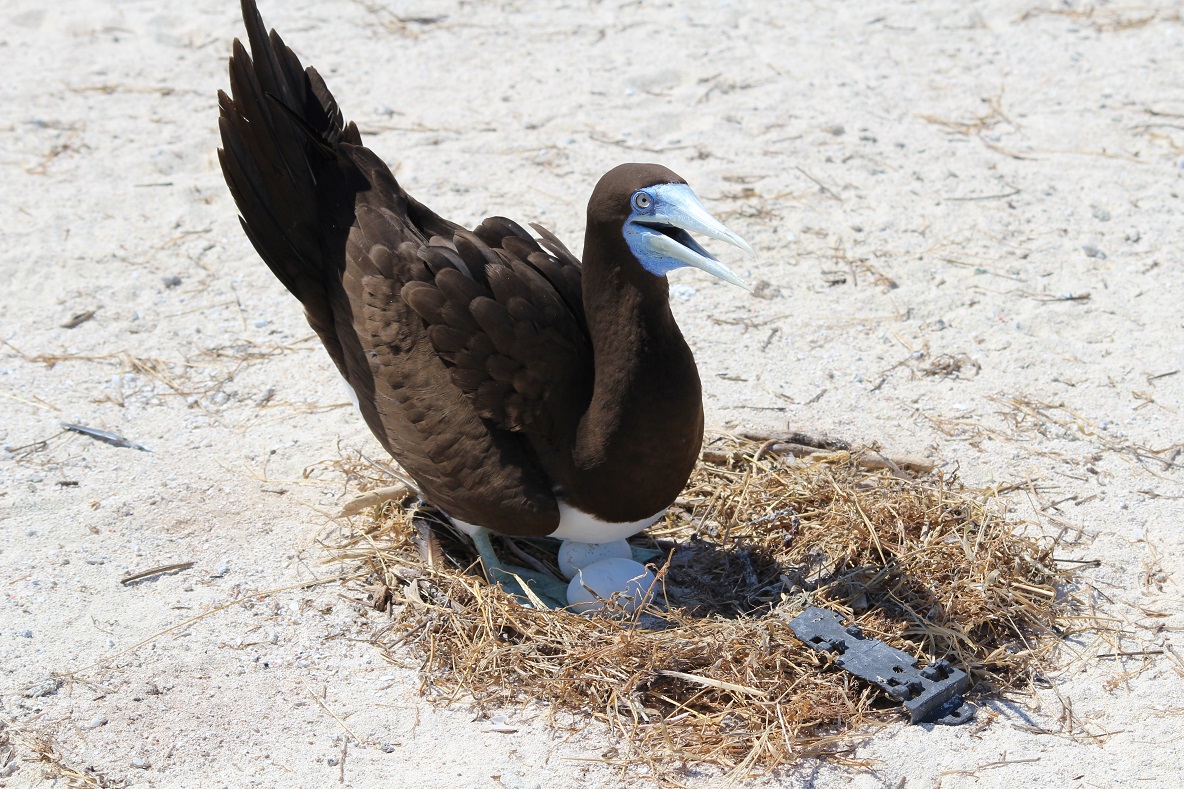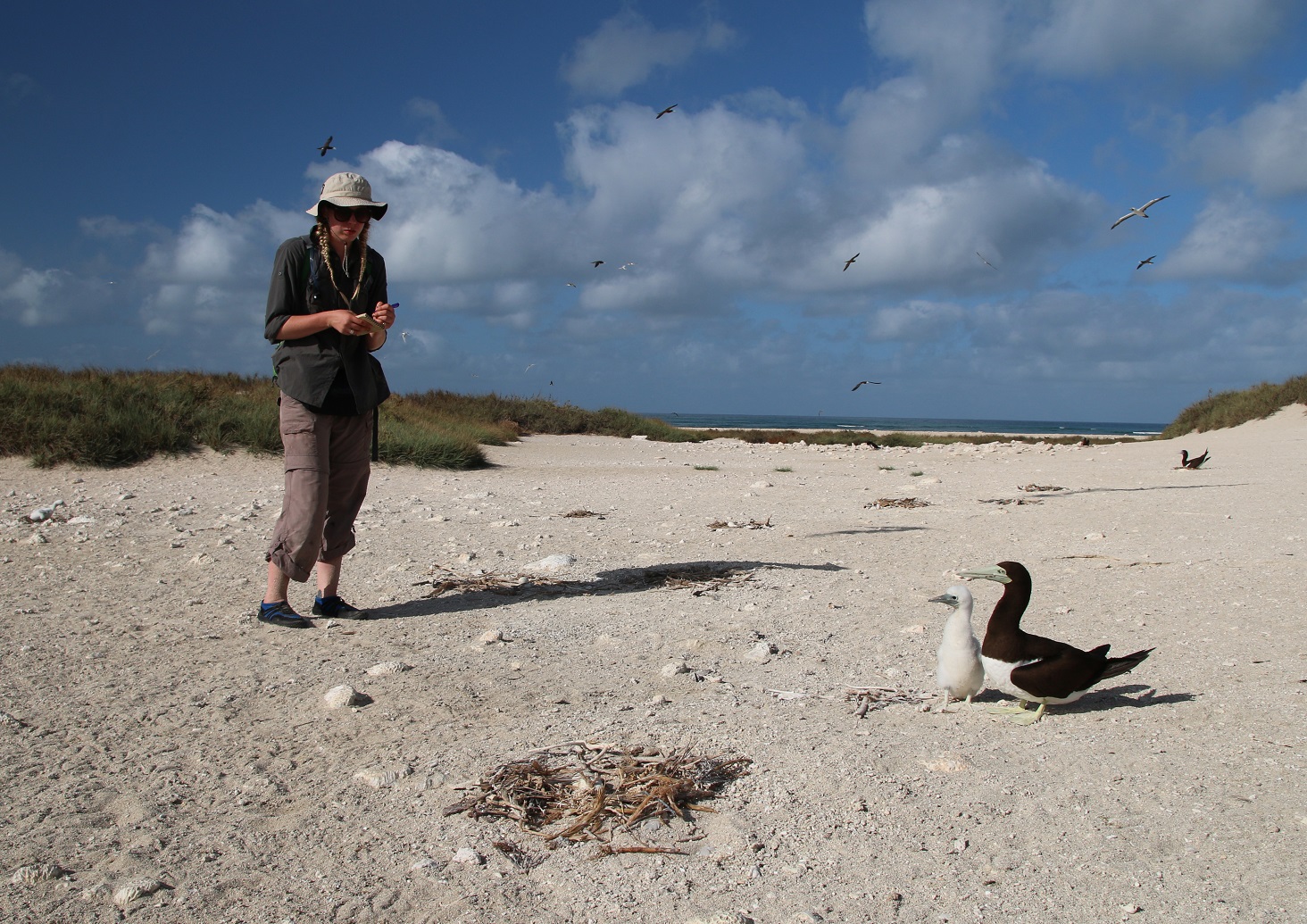
Marine plastic debris is an increasingly common choice of nesting material for a globally dispersed species of seabird – the brown booby - according to a new IMAS-led study.
The first large-scale worldwide study of brown booby nests, led by IMAS Honours student Megan Grant and published in the journal Marine Pollution Bulletin, collected data from 2220 nests at 18 location around the world over a six year period.
Ms Grant said her research found that almost 15 per cent of brown booby nests surveyed contained plastic debris, reflecting the widespread distribution of marine plastic pollution across the world’s oceans.
“Plastic pollution is one of the most recognised and pervasive environmental issues in marine ecosystems but, despite the potential risk of entanglement and mortality of chicks, relatively few studies have looked at the use of debris as a nesting material by seabirds,” Ms Grant said.
 “Of the 18 sites we surveyed, only two had nests with no debris.
“Of the 18 sites we surveyed, only two had nests with no debris.
(Pictured, left, Megan Grant with brown boobys on Bedout Island. Image credits: Jennifer Lavers)
“Some sites had extremely high loads of plastic, such as Cayman Brac in the Caribbean, where every nest contained debris due to nearby human populations and poor waste management, and Bramble Cay in the Coral Sea north of Australia, where almost 83 per cent of nests included plastic debris as a building material, possibly due to waste flowing from PNG’s Fly River.
“One of the questions we considered was whether the nests of brown boobies can be used as a sentinel of marine debris pollution of their local environment.
“As brown boobies usually nest on uninhabited islands far from human population centres, the debris on their nesting beaches is generally transported by ocean currents from land- and marine-based sources further afield.
“We found the proportion of nests with and without debris at each site varied considerably, with no discernible geographic pattern, but that in general brown boobies will opportunistically use plastic debris when it’s available.
“With the level of plastic debris in marine environments set to increase with human population growth, we can expect to see more and more brown booby nests containing plastic in the coming years,” Ms Grant said.
The study involved collaboration with Two Hands Project, Western Australia Parks and Wildlife Service, and the US Fish and Wildlife Service, and was sponsored by Women Divers Hall of Fame and Sea of Change Foundation.